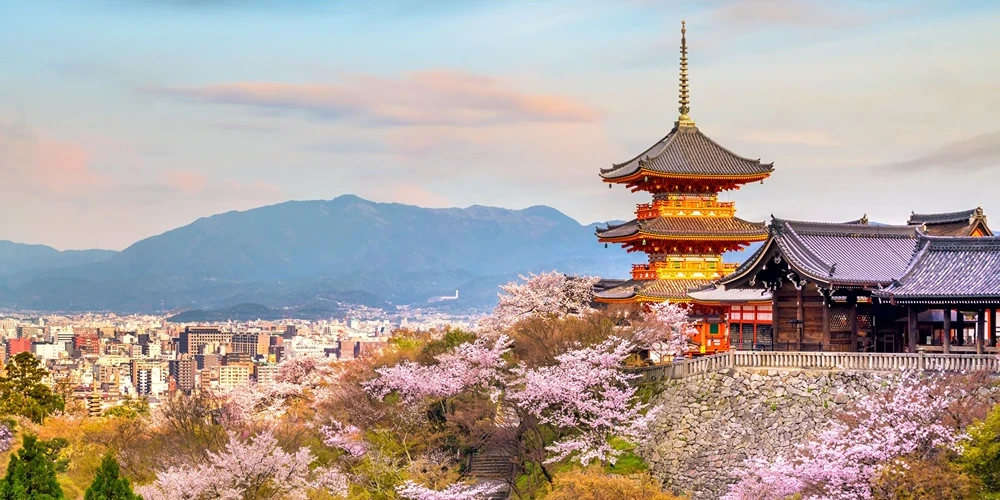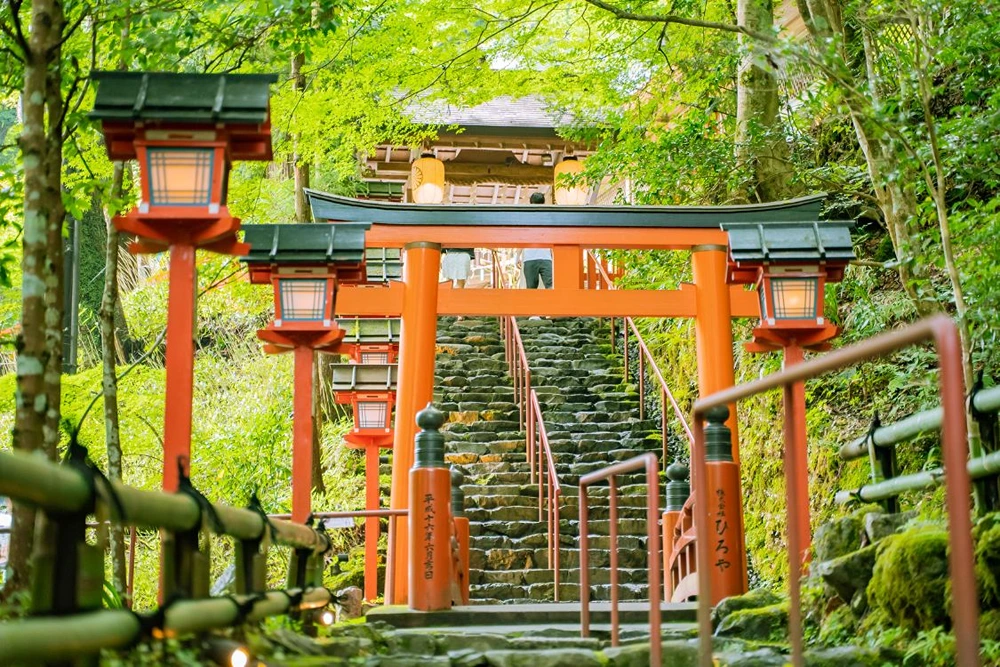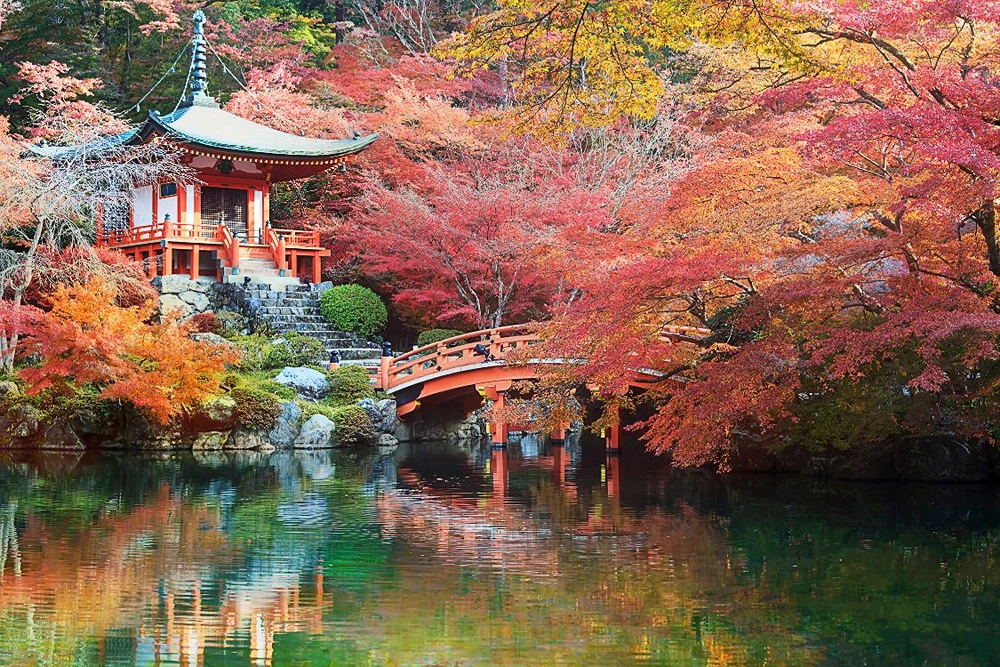Key highlights of Kyoto:
- 17 UNESCO World Heritage Sites
- Home to over 1,600 Buddhist temples and 400 Shinto shrines
- Renowned for its traditional arts, including tea ceremony, ikebana (flower arrangement), and geisha culture
- A culinary paradise, famous for its kaiseki cuisine and unique local specialties
Travel Resources
- Flights: Use our flight search tool to find the most affordable options to Kansai International Airport (KIX) or Osaka International Airport (Itami).
- Travel Insurance: Protect your trip with comprehensive travel insurance tailored to your needs.
- Car Rental: While public transportation is excellent in Kyoto, renting a car can be convenient for day trips to nearby attractions.
- Guided Tours: Enhance your experience with expert-led tours of Kyoto’s top attractions and hidden gems.
- Japan Rail Pass: Consider purchasing a Japan Rail Pass for convenient and cost-effective travel within Kyoto and across Japan.
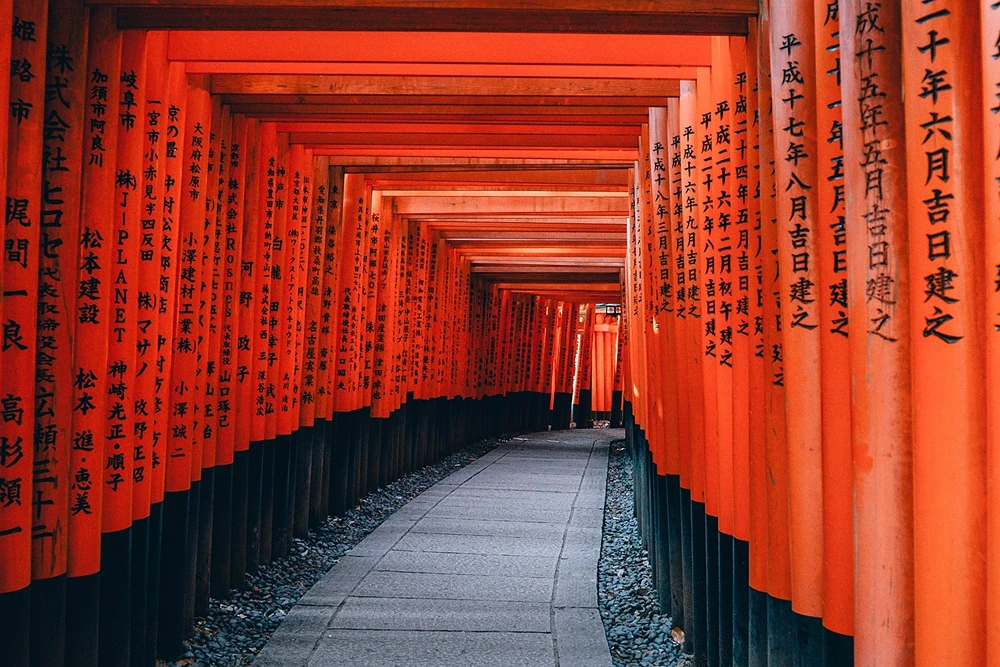
Some History First
Kyoto’s history is deeply intertwined with Japan’s cultural and political development:
- Founded in 794 CE as Heian-kyō, serving as the imperial capital until 1868
- Center of Japanese politics, religion, and culture for over a millennium
- Survived World War II largely intact, preserving much of its historical architecture
- Birthplace of many Japanese cultural traditions, including the tea ceremony, Zen Buddhism, and Noh theater
Kyoto Today
Modern Kyoto is a vibrant city that honors its past while embracing the future:
- Population of approximately 1.5 million
- Leading center for higher education in Japan, home to several prestigious universities
- Thriving technology sector, with companies like Nintendo headquartered here
- Popular tourist destination, welcoming millions of visitors annually
- Hub for traditional crafts, including Kiyomizu pottery, Nishijin textiles, and Kyoto-style fans
Is Kyoto Safe?
Kyoto is considered one of the safest cities in the world for travelers. However, it’s always wise to take standard precautions:
- Be aware of your surroundings, especially in crowded tourist areas
- Keep valuables secure and be cautious of pickpocketing in busy locations
- Respect local customs and etiquette to avoid unintentional offense
- Follow official guidance during natural disasters, such as earthquakes or typhoons
Where is Kyoto?
Kyoto is located in the central part of Honshu, Japan’s main island:
- Situated in the Kansai region
- Approximately 50 kilometers (31 miles) northeast of Osaka
- Surrounded by mountains on three sides, creating a basin known as Kyoto Basin
- Well-connected to other major Japanese cities via high-speed rail
Latest Articles
From The Area
What is the Best Time to Visit Kyoto?
The best time to visit Kyoto depends on your preferences:
- Spring (March to May):
- Cherry blossom season (late March to early April)
- Mild temperatures and low rainfall
- Crowds peak during this time
- Summer (June to August):
- Hot and humid with occasional rain
- Gion Matsuri, Kyoto’s most famous festival, takes place in July
- Lush green landscapes and vibrant atmosphere
- Autumn (September to November):
- Stunning fall foliage (koyo), especially in November
- Comfortable temperatures and clear skies
- Second busiest season after spring
- Winter (December to February):
- Cold but rarely snows
- Fewer tourists and lower prices
- Illumination events and New Year celebrations
How to Get to Kyoto & Around
- By Air:
- Fly into Kansai International Airport (KIX) or Osaka International Airport (Itami)
- Take a train or bus to Kyoto (1-2 hours depending on the airport and mode of transport)
- By Train:
- Shinkansen (bullet train) from Tokyo takes about 2 hours and 15 minutes
- Regular train services connect Kyoto to other major cities
- Within Kyoto:
- Extensive bus network covers most tourist attractions
- Subway system with two lines for quick cross-city travel
- Renting a bicycle is popular for exploring flat areas of the city
- Taxis are available but can be expensive
Things to Do in Kyoto
Kyoto offers a wealth of cultural experiences and sightseeing opportunities:
- Visit iconic temples and shrines:
- Kinkaku-ji (Golden Pavilion)
- Kiyomizu-dera
- Fushimi Inari Taisha
- Explore historic districts:
- Gion (geisha district)
- Higashiyama
- Arashiyama (including the famous bamboo grove)
- Experience traditional culture:
- Attend a tea ceremony
- Try on a kimono
- Watch a geisha performance
- Enjoy nature:
- Hike in the surrounding mountains
- Stroll through peaceful Japanese gardens
- Picnic under cherry blossoms (in season)
Where To Stay In Kyoto
Kyoto offers diverse accommodation options to suit all preferences and budgets:
- Ryokan (traditional Japanese inns):
- Experience authentic Japanese hospitality
- Often include traditional meals and onsen (hot spring baths)
- Machiya (traditional townhouses):
- Restored historic homes converted into vacation rentals
- Ideal for immersing yourself in local life
- Modern Hotels:
- Range from budget-friendly to luxury options
- Often located near major attractions or transportation hubs
- Guesthouses and Hostels:
- Affordable options for budget travelers
- Great for meeting other travelers
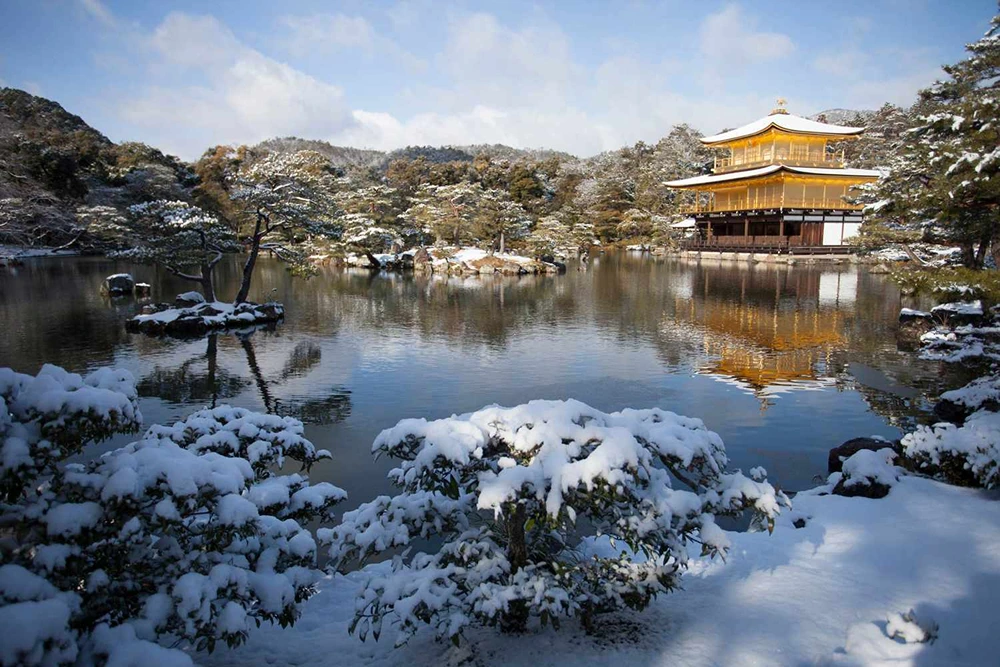
What To Eat In Kyoto
Kyoto is renowned for its refined cuisine, known as Kyo-ryori:
- Kaiseki: Multi-course traditional meal showcasing seasonal ingredients
- Shojin Ryori: Buddhist vegetarian cuisine
- Yudofu: Tofu hot pot, a Kyoto specialty
- Matcha: High-grade green tea and related sweets
- Wagashi: Traditional Japanese confections
- Kyo-yasai: Kyoto’s heirloom vegetables
Don’t miss:
- Nishiki Market, known as “Kyoto’s Kitchen”
- Local sake breweries in the Fushimi district
- Traditional tea houses for an authentic matcha experience
Entry & Exit Requirements
Before traveling to Kyoto, ensure you meet Japan’s entry requirements:
- Valid passport with at least 6 months validity beyond your planned stay
- Visa: Many nationalities can enter Japan visa-free for short stays (usually 90 days)
- Return ticket or proof of onward travel
- Proof of sufficient funds for your stay
Note: Entry requirements can change. Always check the latest information from official sources before your trip.
What To Pack For Your Trip
Prepare for your Kyoto adventure with these essentials:
- Comfortable walking shoes (you’ll do a lot of walking!)
- Appropriate clothing for the season (layers are best)
- Small towel (many public restrooms don’t provide them)
- Portable Wi-Fi device or SIM card for internet access
- Japan Rail Pass (if planning to travel beyond Kyoto)
- Cash (Japan is still largely a cash-based society)
- Universal power adapter
- Respectful clothing for visiting temples and shrines (cover shoulders and knees)
- Reusable water bottle (tap water is safe to drink in Kyoto)
Remember to pack light, as storage space can be limited in Japanese accommodations and on public transportation.
FAQs
Credit cards are widely accepted in Kyoto, especially in tourist areas and major establishments.
While not as common as in larger cities, English signage and basic English communication are available in tourist areas.
When visiting temples, remember to bow before entering, remove your shoes, and avoid loud conversations or disruptions.


